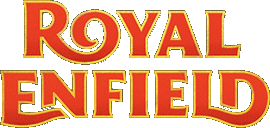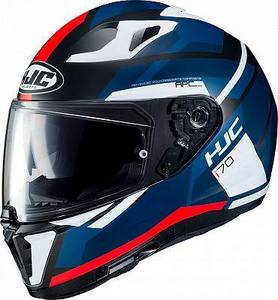How to choose the right helmet
Choosing the best motorbike helmet style
We’ll take a look at the five different types of helmets and their pros and cons, plus how to choose based on what you’ll use it for. As your helmet is going to help protect you from head injuries, it’s important you know about each type.
All helmets in New Zealand must conform to one or more of the following standards:
- UN/ECE Regulation No. 22: Protective helmets and their visors for drivers and passengers of motorcycles and mopeds (Europe)
- Australian Standard AS 1698: Protective helmets for vehicle users
- New Zealand Standard NZS 5430: Protective helmets for vehicle users
- Snell Memorial Foundation: Helmet Standard for use in motorcycling
- Federal Motor Vehicle Safety Standard No. 218: Motorcycle helmets
- British Standard BS 6658: Specification for protective helmets for vehicle users (for type A helmets only)
- Japan Industrial Standard T8133.
It’s an offence to sell a helmet in NZ that doesn’t meet the standard. These five types of helmet can all meet the standards, but some provide much better protection than others.
Types of helmet
Full-face
As up to 55% of all motorbike accidents will see an impact to the rider’s face, the full-face helmet provides the most protection. It covers the entire head, face and lower jaw, with a narrow visor for the rider to see out of. The visor will be made of a non-shattering plastic which should also be fairly scratch-resistant. The visor and mouthpiece serve to keep wind and projectiles off the rider’s face and eyes.
The aerodynamic properties of a full-face helmet are good if it is shaped at the back to prevent lift. Look for a ridge or aerofoil along the back that helps push the helmet onto the head rather than create lift as airflow passes over it.
Some riders who are not used to full-face helmets find them claustrophobic. Their main disadvantage is that they reduce sound perception. The visor must also be wide enough not to obstruct peripheral vision. In some weathers, the visor can steam up which is why ventilation holes are included.
A full-face helmet protects the rider’s eyes and face from wind, rain, dust, insects and other debris
Open-face
An open-face, or three-quarter, helmet covers the forehead and the back of the head over the ears and down to the neckline. The face and jaw are exposed, although some helmets will have a flip-down visor to protect the rider’s eyes from projectiles and insects. The face is also exposed to the weather which, in winter, could lead to cold-related skin problems.
An open-face helmet is not as aerodynamic as a full-face helmet. They can be susceptible to lift, and the rider’s face and the edges of the helmet take the full force of the wind.
Their main advantage is being able to drink, eat and talk without taking the helmet off. They are also cooler in hot weather.
Half helmet
A half helmet is the least protective of all the helmet types. They tend to be worn to present an image, e.g. with certain styles of motorbike such as classic bikes and Harleys. They are lighter than full-face helmets due to less material. They only cover the top of the head, and this leaves the whole face, plus the base of the skull at the back exposed to danger.
Their aerodynamic performance is poor, leaving the rider’s face and neck exposed to wind and buffeting. They often don’t have any ability to attach a visor. Classic bike enthusiasts will sometimes wear goggles to protect their eyes.
Modular or flip-up helmet
A modular helmet has a front section that flips up out of the way to create an open-face helmet. This is convenient if the rider wants to take a drink or eat something, communicate with someone, or if the weather is hot and the traffic is very slow.
They are heavier than full-face helmets because of the extra mechanisms in place to allow the front to flip up, plus extra bracing. If they are worn as a full-face helmet they will provide the same protection as a regular full-face helmet, and the same applies with wearing it as an open-face helmet (the risk is increased of a facial injury).
Aerodynamically, riding with the front flipped up at high speed is not advised.
Motocross
Motocross helmets are designed for off-road riding. They are specialist helmets that have a large chin guard, open visor, and usually a clip-on sun visor. The chin portion is extended to provide protection against obstacles like branches, and also to give some breathing room for the rider. Motocross is physically demanding and the extra room around the mouth makes it more comfortable to wear when breathing heavily and gives less fogging issues.
Goggles can be worn to protect the eyes. Goggles are not as protective as a full clear visor but combined with the sun visor and chin guard the overall protection is similar to a full-face helmet. The main risk is projectiles or something heavy intruding into the helmet through the face area.
Motocross helmets are much less aerodynamic than full-face helmets and this can be fatiguing on neck muscles on a long journey.
How to choose
Second-hand helmets
Never purchase a second hand or old helmet because you don’t know if it’s been in an accident. A helmet can appear in tact, but damage such as small cracks can be invisible to the naked eye, or can be hidden underneath the padding in the helmet. Any helmet should be discarded if it is involved in an accident.
Aerodynamics of the helmet
Because a helmet has a rounded top, they create lift at speed. Modern helmets are designed with aerodynamic features at the back to deflect air in order to create a neutral situation or slight downforce. If a helmet is not very aerodynamic it will put a lot of strain on your neck muscles if you don’t have a windshield to duck down behind.
Weight
The weight of the helmet is often influenced by its price. As all helmets must meet a minimum standard, the more expensive helmets differentiate themselves with a lighter weight which is more comfortable to ride with over a long period of time. A heavier helmet has more inertia in a crash. This can have advantages and disadvantages. It means that your neck muscles have to cope with more to arrest the motion of the helmet, but it also means that if the helmet is hit by something solid, the force imparted into the helmet will be slightly less.
Fitting the helmet
The helmet should fit snugly without being tight. You need to be able to do the chin strap up so that the helmet cannot be pulled off your head. Check that you can see well out of the visor.
The components of a motorcycle helmet
A helmet has a rigid outer shell made of an impact-resistant, puncture-resistant plastic-based material. It’s designed to absorb the main impact and prevent sharp objects from hitting your head.
Inside the outer shell is a polystyrene lining glued to the shell. This deforms under impact, allowing your head to slow down more gradually with less g-force.
On the inside of the polystyrene is comfort padding made of material and foam. This gives the helmet a tighter fit, wicks away sweat and provides general cushioning, day-to-day.
A chin strap holds the helmet onto your head.
If a visor is fitted, this will be a clear polycarbonate-type material, often with scratch-resistant and fog-resistant properties.
Some helmets have vents to channel air into the helmet shell and the visor for comfort.
Some helmets have aerodynamic aids moulded into the main shape or clipped on.
Some helmets have clip-on sun visors.
The final word
Now you know the main points in choosing a bike helmet. A full-face helmet will give you the most protection, but if you do a lot of slower city-based riding in a hot climate, a modular helmet can offer slightly more comfort.
Darren is a member of the Institute of Advanced Motorists and the NZ Motoring Writers' Guild











